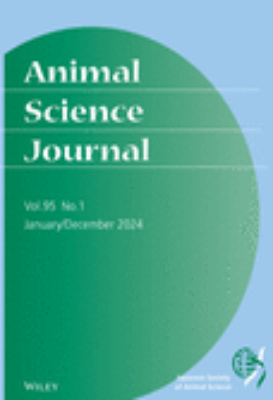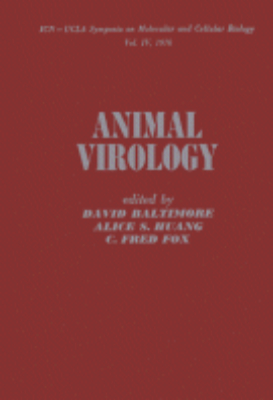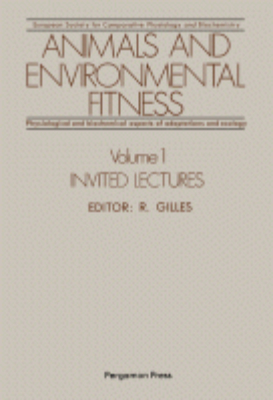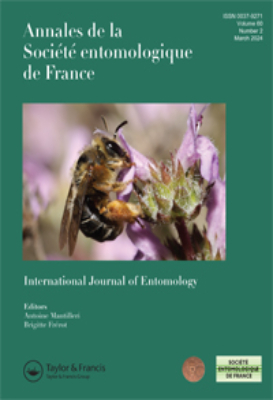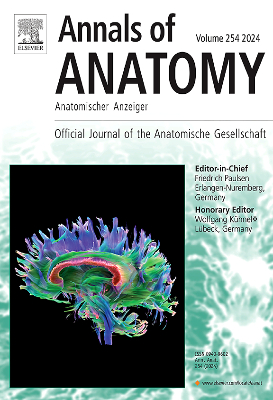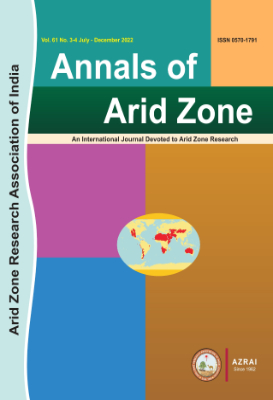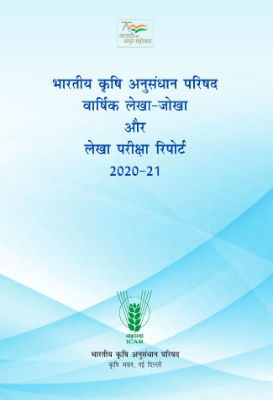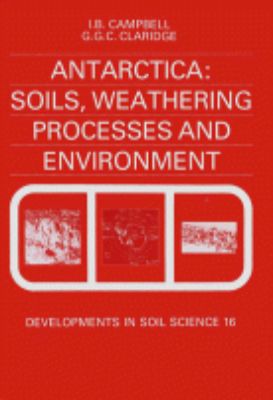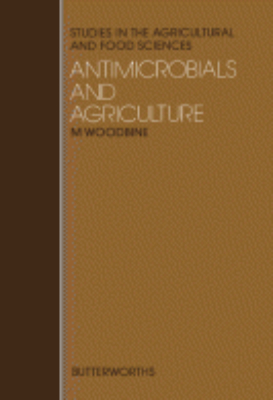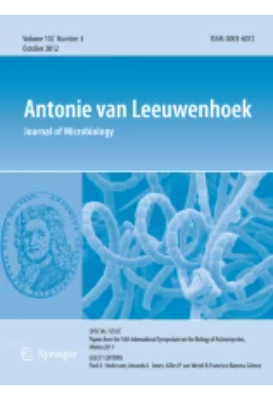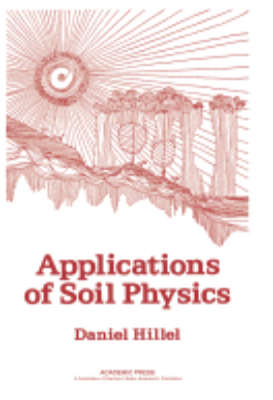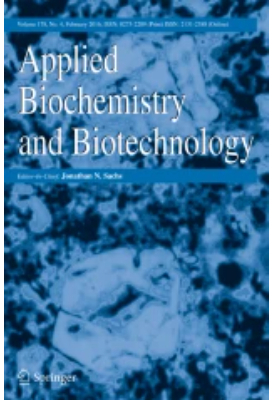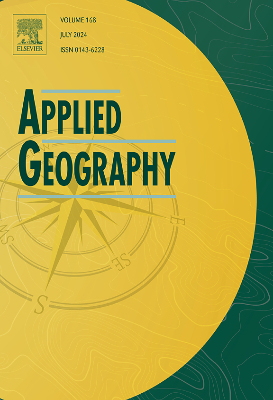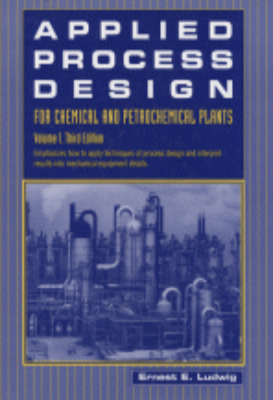E-Resources
Animal Simples
Animal Simples: Approved for Modern Uses of Cure presents a variety of animal simples, which is regarded from a dietetic as well as from a medicinal point of view. This book dispels various prejudices against certain edible clean-feeding insects, eminently delicate, and remedial, which have failed to gain favor as food or medicine. The animal simples described in this book are arranged alphabetically to guide the readers. This text provides useful information regarding the remedies yielded by animals. This book is a valuable resource for readers who are interested on the usefulness of animal simples.
Animal Toxins
Animal Toxins is a collection of papers that tackles the advancement in studies that aim to enhance the contemporary understanding of animal toxins. The materials in the text are organized according to the organism they cover. The first section tackles the concerns with venomous arthropods, such as the structure of the venom gland of the black widow spider Latrodectus mactans and the biochemical-immunochemical aspects of the venom from the scorpion Centruroides sculpturatus. Next, articles about poisonous marine animals are presented, which include differentiation of the poisons of fish, shellfish, and plankton and block of sensory nerve conduction in the cat by mussel poison and tetrodotoxin. In Section III, the selection reviews papers about snakes and amphibians, such as epidemiological methods in studying venomous snakebites and chemistry of cytotoxic substances in amphibian toxins. The book will be of great interest to toxicologists, zoologists, and biochemists.
Animal Vigilance
"Animal Vigilance builds on the authors previous publication with Academic Press (Social Predation: How Group Living Benefits Predators and Prey) by developing several other themes including the development and mechanisms underlying vigilance, as well as developing more fully the evolution and function of vigilance. Animal vigilance has been at the forefront of research on animal behavior for many years, but no comprehensive review of this topic has existed. Students of animal behavior have focused on many aspects of animal vigilance, from models of its adaptive value to empirical research in the laboratory and in the field. The vast literature on vigilance is widely dispersed with often little contact between models and empirical work and between researchers focusing on different taxa such as birds and mammals. Animal Vigilance fills this gap in the available material. Key Features. Tackles vigilance from all angles, theoretical and empirical, while including the broadest range of species to underscore unifying themes. Discusses several newer developments in the area, such as vigilance copying and effect of food density. Highlights recent challenges to assumptions of traditional models of vigilance, such as the assumption that vigilance is independent among group members, which is reviewed during discussion of synchronization and coordination of vigilance in a group. Written by a top expert in animal vigilance"
Animal Virology
Animal Virology consists of papers presented in a meeting which considered broad issues and advances in animal virology and tumor viruses. This book is divided into nine parts, representing the nine sessions of the meeting. Five of the nine sections deal particularly with viruses known to be oncogenic in animals, and one of these covers explicitly human oncornaviruses. The other four sections describe the processes common to all viruses: replication, protein synthesis, and persistence, wherein emphasis is given to negative strand viruses and plant viruses.
Animal Virus Genetics
Animal Virus Genetics is a collection of scientific presentations of the ICN-UCLA Symposia on Molecular and Cellular Biology, held at the University of California, Los Angeles in 1980. The papers in the compendium focus on the basic genetic model systems; the uses of genetic approaches to study basic problems in molecular biology; and on the increasing application of genetic systems to the study of more complex viral-host interactions such as viral virulence and persistence. Microbiologists, cellular biologists, and virologists will find the book insightful.
Animals and Environmental Fitness: Physiological and Biochemical Aspects of Adaptation and Ecology: Volume 1 1980
Animals and Environmental Fitness, Volume 1: Invited Lectures is a collection of papers that tackles ecological concerns. The materials of the book are organized according the main issue of their contents. The text first tackles the chemical factors of the environment, such as water and oxygen availability, ecomones, and pollutants. The other half of the book encompasses the physical factors of the environment that include light, pressure, and temperature. The text will be of great use to scientists who study the interaction between flora, fauna, and the total environment.
Animals and Environmental Fitness: Physiological and Biochemical Aspects of Adaptation and Ecology: Volume 2 1980
Animals and Environmental Fitness: Physiological and Biochemical Aspects of Adaptation and Ecology, Volume 2 contains the proceedings of the First Conference of the European Society for Comparative Physiology and Biochemistry held in Lige, Belgium, on August 27-31, 1979. The papers explore the physiology and biochemistry of animal adaptation and ecology and cover topics ranging from amino acid transport and metabolism during osmotic shock to the role of organic compounds in osmoregulation in plants and animals. This volume is comprised of 89 chapters and begins with an analysis of the transport and metabolism of amino acids under osmotic stress, followed by a discussion on cell volume regulation in isolated heart ventricles from the flounder, Platichthys flesus, perfused with anisosmotic media. Subsequent chapters focus on the effects of cholinergic drugs on the osmotic fragility of erythrocytes; strategies of osmoregulation in the fiddler crab Uca pugilator; ionic regulation in the African catfish Clarias mossambicus in water and air; and environmental and endocrine factors controlling osmotic water fluxes in gills of Sarotherodon (tilapia) mossambicus. The effect of seawater adaptation on the phosphatidyl-choline metabolism in the eel is also considered, along with evaporative water loss in anuran amphibians. This book will be of value to zoologists, physiologists, biologists, and biochemists.
Annals of Agricultural Ressearch
The Indian Society of Agricultural Science was established in 1979. The Society is an umbrella society which provides an opportunity to agricultural scientists belonging different disciplines to address the problems confronting Indian agriculture in a concerted and integrated manner. The name of the Society shall be "THE INDIAN SOCIETY OF AGRICULTURAL SCIENCE (ISAS)". The head office of the Society shall be at the Indian Agricultural Research Institute, New Delhi-I 10 012.
Annals of Arid Zone
Focus and Scope The Annals of Arid Zone is a open access journal totally devoted to dryland and arid zone research. The Journal accepts the original research and review articles covering diverse fields like dryland agriculture, crop management, soil-plant-water relationship, range ecology and management, solar energy utilization, desertification, rangelands, sand dunes, livestock, agroforestry, wind erosion, watershed management, biodiversity, integrated farming systems, climate change, hydrology, etc. publishes the findings of research relevant to dryland in general and arid zone (hot and cold) in particular. Peer Review Process The research/ review article within one week of its submission is sent to two different independent referees. They are selected on basis of their expertise in areas of paper received, have ability to logically comments based on the content, with no conflicts of interest and also reliable to do review in the given timeframe. Referees are expected to respond to the editor's request for advice within a limited period of time (3 weeks), which is clearly stated by the editor. A comment sheet is also provided to him for seeking his advice on all aspects of the article. He is advised to return the manuscript immediately without comments if it is not possible for him to attend to a manuscript within this period, so that the editor can send it to another referee without further delay. Generally 6 weeks' time is given to the each reviewer for completion of review the research article. Comments from the referee are received by the editor within the stipulated timeframe If the reports of both referees disagree with regard to the suitability of the paper for publication, advice of a third referee is sought. Comments received from both referees: Article is sent to author for modification along with comments of referees. At this stage editor completes the preliminary editing. It includes checking in-house style (presentation of title, affiliations, present address, abstract, scientific nomenclature, text and reference presentation as per the Journals' format). Comments not received from both referees: If comments are not received from both referees within the stipulated timeframe, reminder is sent to them. Reminder to referee from whom the comments not received: If comments are not received from either of the one referee within the stipulated timeframe, reminder is sent to him. However if his reply is not coming in a stipulated time, editor takes suitable action on the basis of comments received from one referee. In case of no reply from both the referees the article is sent to a new referee. Rejection of the article on the basis of comments of referees: The article is rejected on the basis of comments of referee/referees. The author is informed accordingly. Author does not agree with the adverse comments of one referee or in the meantime suitable comments are received from Second referee: Editor's decision independently or in consultation with editorial board, is final. Editor may ask the first referee or a third referee to go through the comments of first referee, reply of author to comments of referee and /or contradictory comments of second referee. Favorable comments are received from second referee after the modification: Input of the second referee is incorporated in modified article. Author is contacted if referee asks for inclusion of more information in the form of table, figs or references. Adverse comments received from the second referee at any stage: Author is informed of the adverse comments from second referee and action is stalled (even at proof stage) till final decision. Editor's decision independently or in consultation with editorial board, is final. Acceptance of the article is sent to author. Plagiarism: Plagiarism will be checked by iThenticate software. Articles/ manuscripts with text resemblance less than 20 % (excluding standard text in methods and references in text as well as bibliography) will be only be excepted for publication. Publication Frequency The journal is published quarterly. Open Access Policy The Journal is available as Open Access under the Creative Commons Attribution-Non Commercial-Share Alike 4.0 International License. Ethical Policy Our interaction with our authors is built upon a foundation of trust, and we operate on the principle of good faith when it comes to publishing submitted materials. We uphold the belief that every author, referee, and editor should openly disclose any conflicting or competing interests tied to a specific article. Our evaluation of manuscripts is impartial, irrespective of authors' attributes such as race, gender, religious beliefs, ethnicity, citizenship, age, or reputation. We exclusively consider fresh submissions that have not been previously published or simultaneously submitted elsewhere. It is imperative that the reproduction of content from other papers be accompanied by appropriate source credits, and any form of plagiarism, whether it involves the uncredited use of external text or the creation of multiple papers with substantially similar content by the same authors, is strictly prohibited and is sole responsibility of the author. Simultaneous submission of identical findings to multiple journals is deemed unethical, with exceptions granted to review articles that include proper citations. Authors are responsible for acknowledging the contributions of other researchers that have influenced their research and should duly reference the publications that have shaped the trajectory and progress of their study The Publisher will address the matters related to authorship and contributorship, managing complaints and appeals, addressing allegations of research misconduct, handling conflicts of interest, ensuring ethical oversight, addressing intellectual property rights (IPR) concerns, facilitating post-publication discussions, and managing corrections and retractions. Throughout this process, we adhere to the guidelines set forth by the Committee on Publication Ethics (COPE) Sponsors ICAR-Central Arid Zone Research Institute, Jodhpur-342003 Journal History The Arid Zone Research Association of India, Jodhpur (India) (AZRAI; Regd No: 17988/69) was formed in 1962 to disseminate research findings related to a variety of issues through interdisciplinary researches concerned with the development of arid zone. A quarterly journal, Annals of Arid Zone was started in 1963. Recently the association has published 54th volume of Annals of Arid Zone in 2015.
Antarctic Fish Biology
This important volume provides an original synthesis and novel overview of Antarctic fish biology, detailing the evolution of these fish in some of the most unusual and extreme environments in the world. Focusing on one group of fish, the notothenoioids, which contain the majority of the current organismal diversity, this book describes a fauna that has evolved in isolation and experienced incredible adaptive radiation by acquiring numerous physiological specializations. Darwin's finches and African cichlids may be joined by Antarctic fishes as exemplars of adaptive radiation.The books' coverage is detailed and comprehensive, and the author clearly recognizes the fact that these fish are a component of a most interesting and biologically unique ecosystem and environment. Topics inAntarctic Fish Biologyinclude past and present environments, fossil records, taxonomic composition of fauna, systematic relationships, diversification, and physiological adaptations.
Antimetabolites in Biochemistry Biology and Medicine
FEBS: Federation of European Biochemical Societies, Volume 57: Antimetabolites in Biochemistry, Biology, and Medicine is a collection of papers that presents that advancement in the field of antimetabolites research. The title first covers the use of antimetabolites in enzymology, and then proceeds to tackling the consequences of analog incorporation into nucleic acids. Next, the selection discusses the rational approach to the use of antimetabolite in commination cancer chemotherapy an in immunosuppression. The text also covers the aspects of selective antiviral action. In the last part, the selection details various compounds, along with their synthesis and mechanisms of action. The book will be of great use to researchers and practitioners of biochemistry, biology, and medicine.
Applications of Soil Physics
Applications of Soil Physics deals with the applications of soil physics and covers topics ranging from infiltration and surface runoff to groundwater drainage, evaporation from bare-surface soils, and uptake of soil moisture by plants. Water balance and energy balance in the field are also discussed, along with tillage and soil structure management. The development and extension of Penman's evaporation formula is also described. This book is comprised of 14 chapters and begins with a systematic description of the field-water cycle and its management, with emphasis on infiltration and runoff; redistribution and drainage; evaporation and transpiration; and irrigation and tillage. Subsequent chapters focus on transpiration from plant canopies; freezing phenomena in soils; scaling and similitude of soil-water phenomena; spatial variability of soil physical properties; and movement of solutes during infiltration into homogeneous soil. Concepts of soil-water availability to plants are considered, together with principles of irrigation management and the advantages and limitations of drip irrigation. This monograph is intended for upper-level undergraduate and graduate students of the environmental, engineering, and agronomic sciences.
Applied Biochemistry and Bioengineering
Applied Biochemistry and Bioengineering, Volume 2: Enzyme Technology discusses the industrial applications of immobilized enzymes. Organized into 10 chapters, this volume first describes the techniques for the isolation and purification of intracellular and extracellular enzymes for use on an industrial scale. It then deals with immobilized enzyme processes, with an emphasis on immobilized glucose isomerase and the amylolytic enzymes related to the production of high-fructose syrups from starch. Significant topics on immobilized enzyme technology for future uses in energy transduction and in pharmaceutical modifications of steroid compounds are also explored. Microbiologists, geneticists, and chemical engineers will find this book of great value.
Applied Plant Genomics and Biotechnology
"Applied plant genomics and biotechnology reviews the recent advancements in the post-genomic era, discussing how different varieties respond to abiotic and biotic stresses, investigating epigenetic modifications and epigenetic memory through analysis of DNA methylation states, applicative uses of RNA silencing and RNA interference in plant physiology and in experimental transgenics, and plants modified to produce high-value pharmaceutical proteins. The book provides an overview of research advances in application of RNA silencing and RNA interference, through Virus-based transient gene expression systems, Virus induced gene complementation (VIGC), Virus induced gene silencing (Sir VIGS, Mr VIGS) Virus-based microRNA silencing (VbMS) and Virus-based RNA mobility assays (VRMA); RNA based vaccines and expression of virus proteins or RNA, and virus-like particles in plants, the potential of virus vaccines and therapeutics, and exploring plants as factories for useful products and pharmaceuticals are topics wholly deepened. The book reviews and discuss Plant Functional Genomic studies discussing the technologies supporting the genetic improvement of plants and the production of plant varieties more resistant to biotic and abiotic stresses. Several important crops are analysed providing a glimpse on the most up-to-date methods and topics of investigation. The book presents a review on current state of GMO, the cisgenesis-derived plants and novel plant products devoid of transgene elements, discuss their regulation and the production of desired traits such as resistance to viruses and disease also in fruit trees and wood trees with long vegetative periods. Several chapters cover aspects of plant physiology related to plant improvement: cytokinin metabolism and hormone signaling pathways are discussed in barley; PARP-domain proteins involved in Stress-Induced Morphogenetic Response, regulation of NAD signaling and ROS dependent synthesis of anthocyanins. Apple allergen isoforms and the various content in different varieties are discussed and approaches to reduce their presence. Euphorbiaceae, castor bean, cassava and Jathropa are discussed at genomic structure, their diseases and viruses, and methods of transformation. Rice genomics and agricultural traits are discussed, and biotechnology for engineering and improve rice varieties. Mango topics are presented with an overview of molecular methods for variety differentiation, and aspects of fruit improvement by traditional and biotechnology methods. Oilseed rape is presented, discussing the genetic diversity, quality traits, genetic maps, genomic selection and comparative genomics for improvement of varieties. Tomato studies are presented, with an overview on the knowledge of the regulatory networks involved in flowering, methods applied to study the tomato genome-wide DNA methylation, its regulation by small RNAs, microRNA-dependent control of transcription factors expression, the development and ripening processes in tomato, genomic studies and fruit modelling to establish fleshy fruit traits of interest; the gene reprogramming during fruit ripening, and the ethylene dependent and independent DNA methylation changes. Key Features. provides an overview on the ongoing projects and activities in the field of applied biotechnology. includes examples of different crops and applications to be exploited. reviews and discusses Plant Functional Genomic studies and the future developments in the field. explores the new technologies supporting the genetic improvement of plants"

